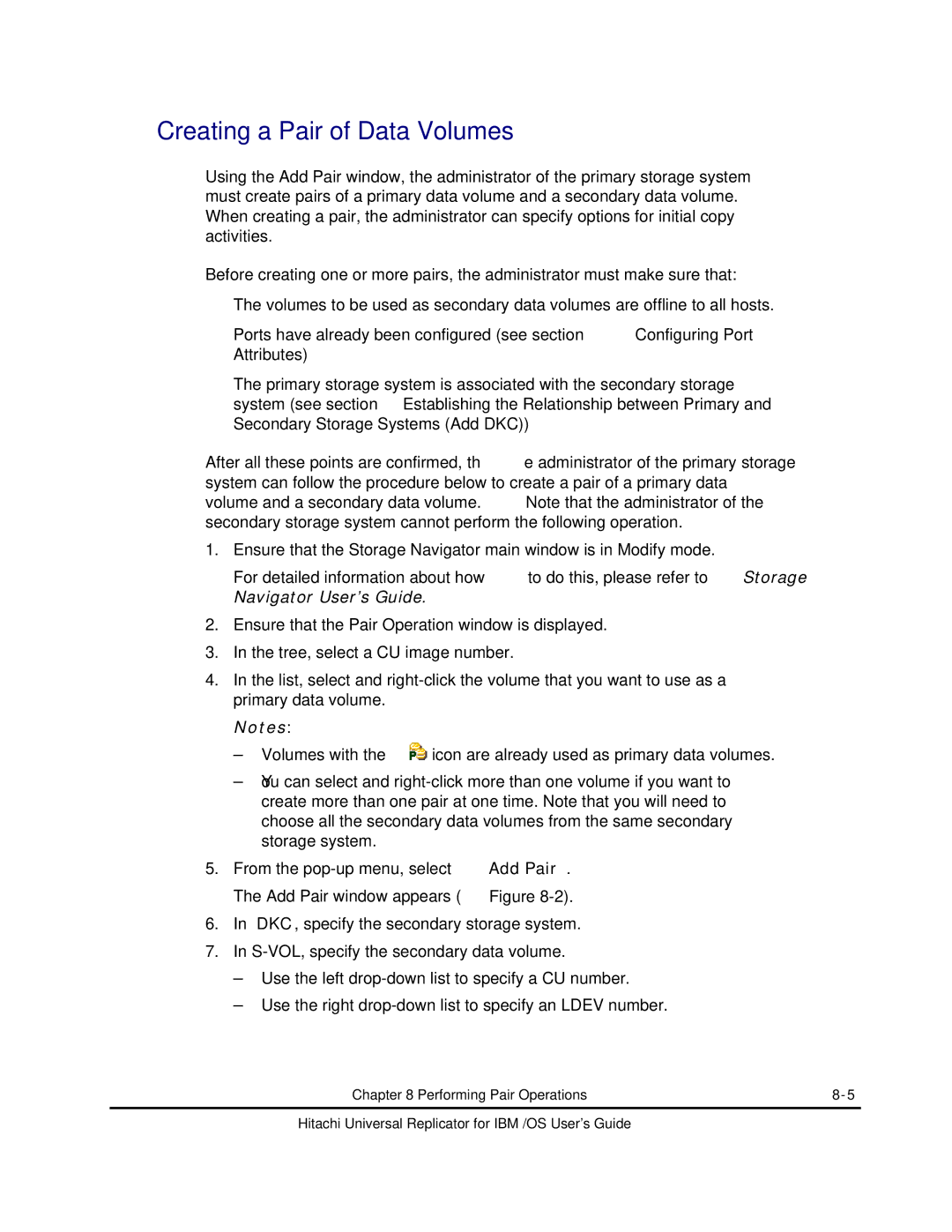Creating a Pair of Data Volumes
Using the Add Pair window, the administrator of the primary storage system must create pairs of a primary data volume and a secondary data volume. When creating a pair, the administrator can specify options for initial copy activities.
Before creating one or more pairs, the administrator must make sure that:
•The volumes to be used as secondary data volumes are offline to all hosts.
•Ports have already been configured (see section Configuring Port Attributes)
•The primary storage system is associated with the secondary storage system (see section Establishing the Relationship between Primary and Secondary Storage Systems (Add DKC))
After all these points are confirmed, the administrator of the primary storage system can follow the procedure below to create a pair of a primary data volume and a secondary data volume. Note that the administrator of the secondary storage system cannot perform the following operation.
1.Ensure that the Storage Navigator main window is in Modify mode.
For detailed information about how to do this, please refer to Storage Navigator User’s Guide.
2.Ensure that the Pair Operation window is displayed.
3.In the tree, select a CU image number.
4.In the list, select and
Notes:
–Volumes with the ![]() icon are already used as primary data volumes.
icon are already used as primary data volumes.
–You can select and
5.From the
6.In DKC, specify the secondary storage system.
7.In
–Use the left
–Use the right
Chapter 8 Performing Pair Operations |
